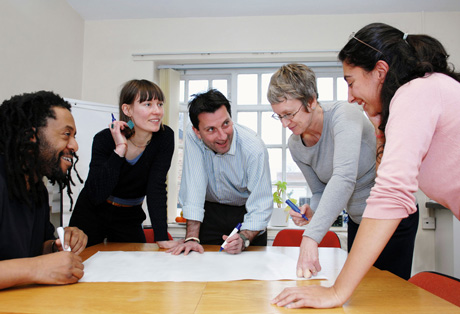
Games & activities have been a part of training for decades. From icebreakers to outdoor adventures, we have probably all experienced them at one time or another. Like most training tools, when used well they can be incredibly beneficial and have a positive impact. They can also be used poorly with negative results. So how can you determine when they should be used, and when they shouldn’t be used? It’s important to understand what contribution games and activities can have on training. Here are three Good Reasons to Utilise Games & Activities
1. Accelerated learning is what happens when trainers respond to sound scientific evidence about the way our brains work and how people learn, and then design their programs accordingly. Proponents advise that the main section of any teaching or training program should predominantly consist of activities. When the learner is actively involved in the training, rather than just receiving information from the trainer the results are faster, more cost effective learning. Author Peter Julian states that “the key to true accelerated learning is in finding ways for a student to absorb, filter and actually use the information being studied“*. Activities provide an excellent opportunity to do exactly that, by allowing participants to absorb the information through a variety of different techniques, and apply the learning through case studies, experiential learning activities and simulations.
2. State changes, as veteran trainer Dr Rich Allen describes are the intentional shifts a trainer makes from one style of teaching to another. Dr Allen talks about five different kinds of ‘state changes’:
-
- The use of quick fun activities to surprise people and combat distractions
- Activities that require physical movement (because the longer people sit, the more uncomfortable they’ll become and the less engaged they’ll be).
- Activities encouraging social engagement to help reduce the threat/distraction of being with a group of people they may not know very well (or at all).
- Storytelling which allows the illustration of a point in an interesting way that engages people’s emotions.
- Activities that encourage positive emotions, such as humour, can be used to help shift perspective.
3. Teamwork and/or Problem Solving is one of the greatest strengths an organisation can develop. Games, activities and simulations provide an excellent opportunity for participants to practise these skills. Debriefing the activity also allows for “in the moment” learning where challenges can be discussed, solutions found and wins celebrated.
Five Quick Tips on Using Games & Activities
- Don’t ever use games and activities just as a time-filler. They should always have a purpose.
- Make sure they have a direct correlation to the learning content, or are designed to bring about a change in state (see above) in order to help people learn.
- Always have a range of activities ready to draw on, so you can be flexible so you can respond to the participants needs on the day.
- Make sure you understand the activity before you get to the training room! This includes being clear on all instructions and materials required.
- Finally, encourage enjoyment but remember to keep the end game in mind. Fun for the sake of it is great for recreation, but learning is a different matter. If you align your training activities, games and simulations with your training objectives, both your participants and your organisation will reap the benefits – and you can still have some fun along the way.

Colin Noyes is the Director of ResourceZone International. He has thirty years of ministry experience as a pastor, college lecturer and consultant/coach to consultants, denominational leaders and local church pastors.



Comment here